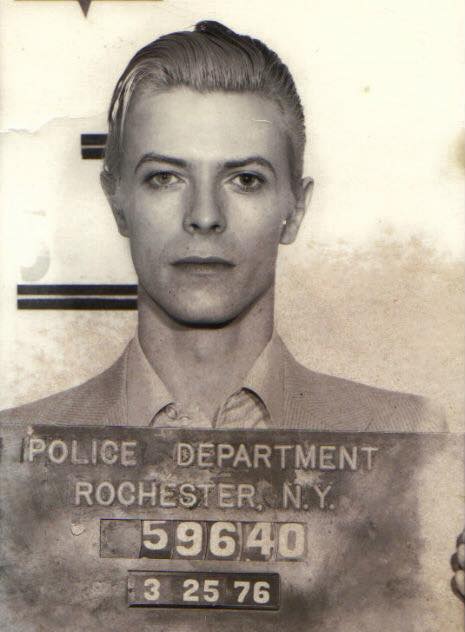
When news broke today of the death Sunday of The Thin White Duke himself, David Bowie, my first thought was of that amazing cover of “Space Oddity” that Canadian astronaut Chris Hadfield recorded on the International Space Station.
It’s a fitting tribute to David Bowie that his lyrics are sung in the first music video in space. But did you know that cannabis and a sexy older woman helped create Bowie’s first major hit?
In the mid-1960’s the struggling folk singer Davy Jones could not break into the music biz. He was also being confused with another Brit, Davy Jones of The Monkees. He changed his name in 1965 and in 1967 released an eponymous debut album, “David Bowie”, that went nowhere.
Two years later in April of 1969, a 30-year-old single mother of two named Mary Finnigan is outside when she hears “This is Major Tom to ground control…” being sung from an apartment above hers. Mary shouts up at the music to ask who’s playing. Then 23 22-year-old David Bowie pops his head out the window and says, “Hello, I’m David.”
Mary responds, “Would you like to come downstairs for a cup of tea and some tincture of cannabis?”
That began a six-month relationship between the two, with Bowie moving in to Mary’s apartment. Mary’s children, Caroline and Richard, loved “Space Oddity”. “It should go to No 1,” said Caroline. “I hope it does because I’ll be able to impress my school friends.”
Indeed, “Space Oddity” became David Bowie’s first #1 single on the UK Pop Charts.
In her memoirs, Mary tells how she and Bowie often shared cannabis and hashish. However, Mary wasn’t ready to share in the same sexual proclivities of Bowie, who was involved with another woman, Angie Barrett (who’d later become the first Mrs. Bowie), as well as man, Calvin Mark Lee, and yet another woman man, Lindsay Kemp.
Fast-forward to the next decade. It’s March 22, 1976, and David Bowie is set to play a gig in Rochester, New York. At 2:25am, Rochester vice police arrest Bowie and Stooges frontman Iggy Pop, among others, and charge them with possession of 182 grams (about 4/10ths of a pound) of marijuana.
Bowie posts bond for everybody and he and Iggy make their ways to other concerts already on the schedule. Four days later, Bowie, charged as David Jones, pleads “not guilty, sir” to the City Court. The judge then set a date for a preliminary hearing on April 20, 1976 – that’s right, 4/20 – where Bowie could face up to 15 years in prison if convicted.
When asked if the arrest would affect any plans Bowie might have to return to Rochester again, Bowie answers, “certainly not, absolutely not.” Bowie lied, as he never did return to Rochester. Neither for a hearing, as a grand jury refused to indict him, nor for a concert, as he never played Rochester again.
In 2013, marijuana touches Bowie’s life again through his daughter-in-law. Bowie’s son, Duncan Jones, is a film director with a 33-year-old wife named Nadine Rodene. She developed breast cancer and used a cannabis tincture – similar to the one Mary Finnigan offered Bowie in 1969 – to fight the effects of chemotherapy.
Marijuana – the only drug that fights cancer and helps create the greatest music of all time… so long as its users aren’t imprisoned for fifteen years for possessing it. If Bowie had been convicted in Rochester, he could have been sitting in a New York prison instead of recording his 1983 comeback, “Let’s Dance”, which also launched the career of the incredible Texas blues guitarist, Stevie Ray Vaughan. It makes you wonder how many other great musical careers we lost out on because of marijuana prohibition.







